小编给大家分享一下Python3.5基础之函数定义的示例分析,相信大部分人都还不怎么了解,因此分享这篇文章给大家参考一下,希望大家阅读完这篇文章后大有收获,下面让我们一起去了解一下吧!
具体如下:
1、函数学习框架
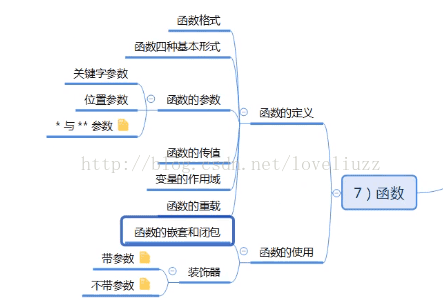
2、函数的定义与格式
(1)定义
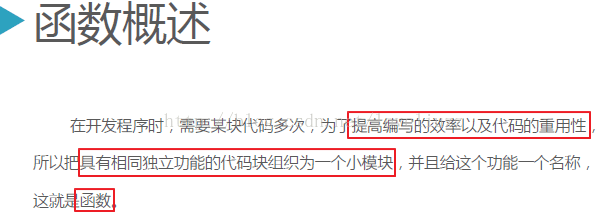
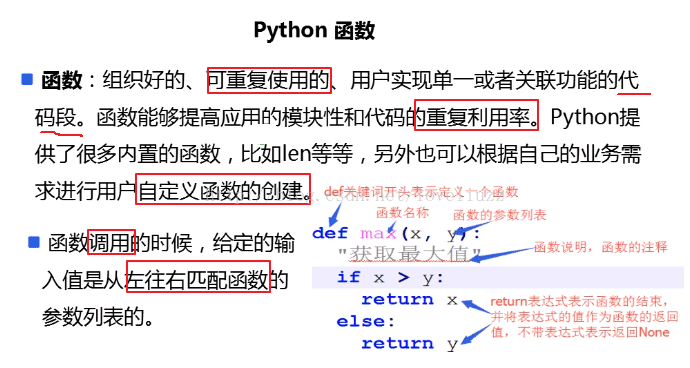
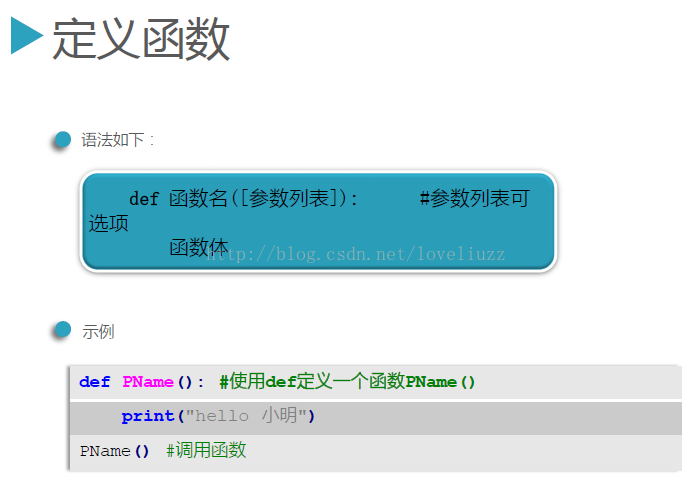
(2)函数调用
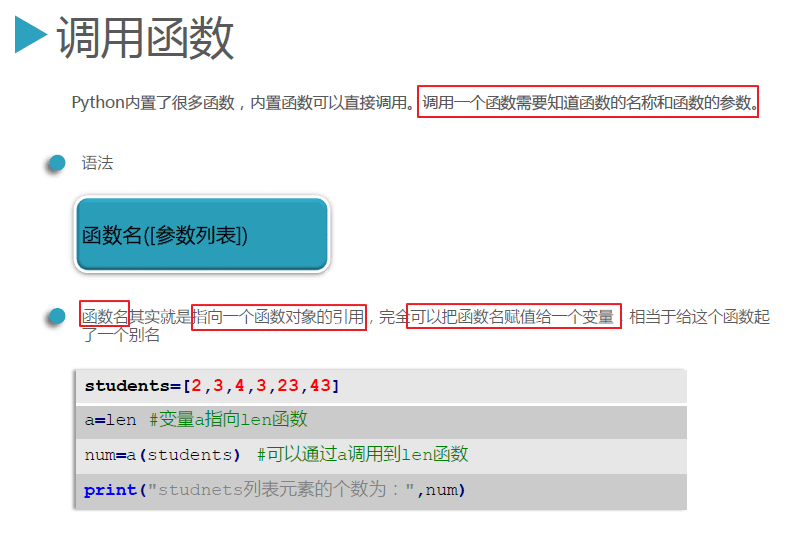
注:函数名称不能以数字开头,建议函数名称的开头用小写的字母
(3)函数有四种格式,分别是:无参数无返回值,有参数无返回值、无参数有返回值、有参数有返回值
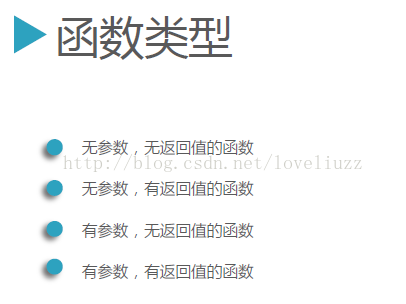
#!/usr/bin/env python
# -*- coding:utf-8 -*-
# Author:ZhengzhengLiu
# 无参数无返回值
def hello():
# 函数体/方法体
print("hello world")
hello()
# 有参数无返回值
def add(x, y):
print(x + y)
add(10, 20)
# 无参数有返回值
def sleep():
return "sleep"
s = sleep()
print(s)
# print(sleep()) 等价于上面两句
# 有参数有返回值
def sub(x, y):
return x * y
res = sub(12, 6)
print(res)运行结果
hello world
30
sleep
72
3、函数的参数
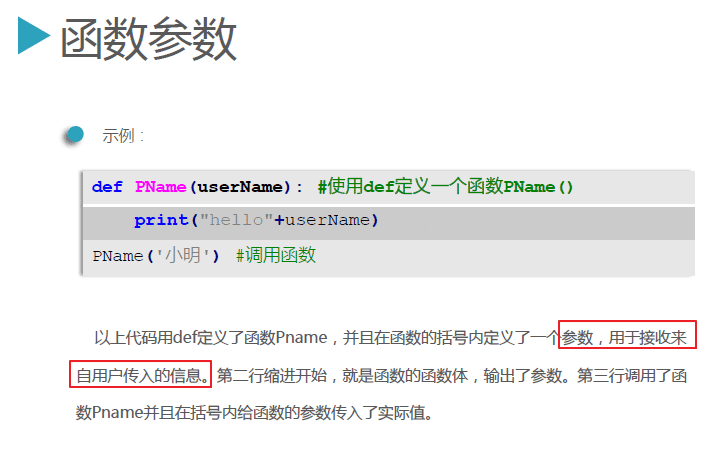
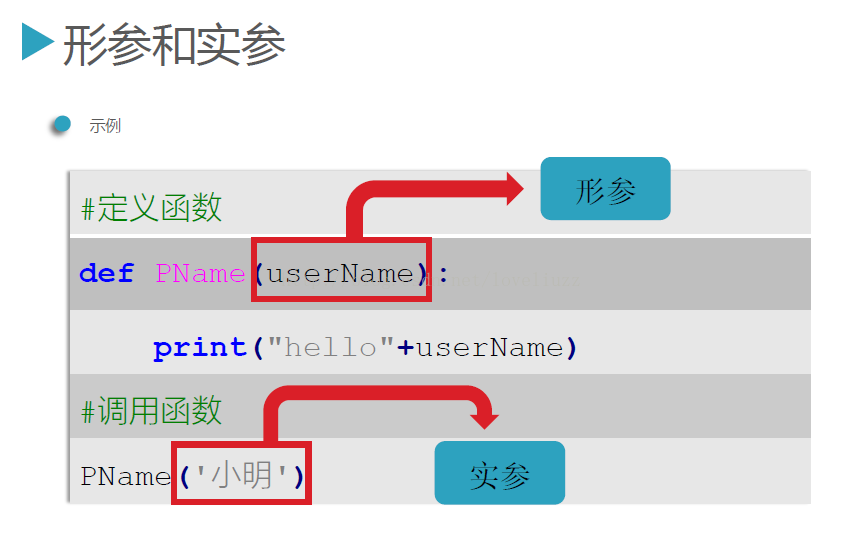
注:定义再函数体内的参数是形参,调用时传入的参数是实参。
函数参数包括:位置参数、关键字参数和不定个数参数
(1)位置参数、关键字参数
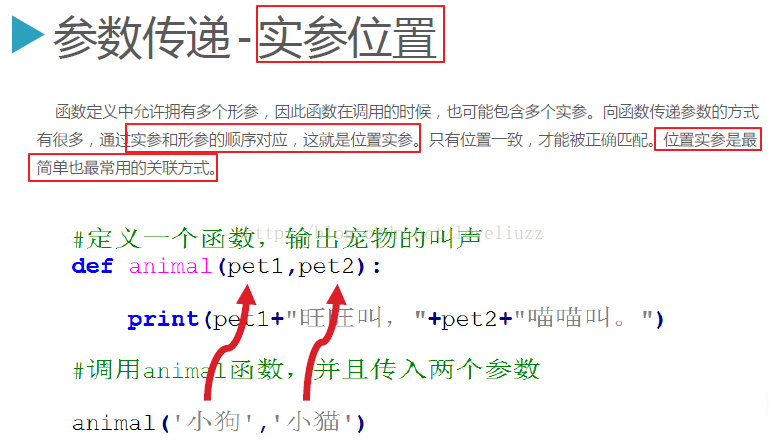
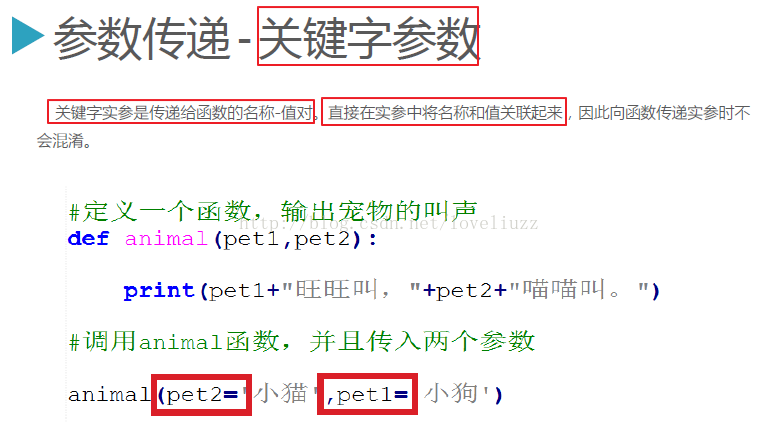
示例代码:
#位置参数 def test(x,y,z): print(x,y,z) test(1,2,3) #关键字参数 def test1(x,y,z=10): print(x,y,z) test1(1,2,3) test1(1,2) #关键字参数,z采用默认的参数值 test1(x=2,z=3,y=1) #调用时的关键字参数
运行结果:
1 2 3
1 2 3
1 2 10
2 1 3
(2)默认参数
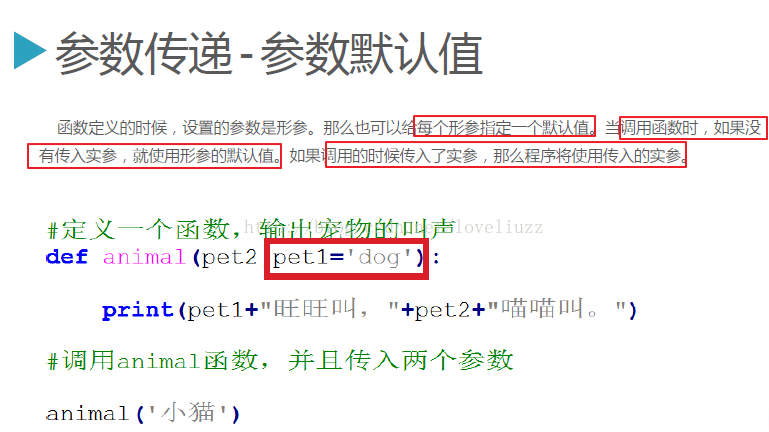
注:带有默认值参数的形参必须放在参数的最后面的位置。
(3)不定个数参数,用*args 和 **kwarg
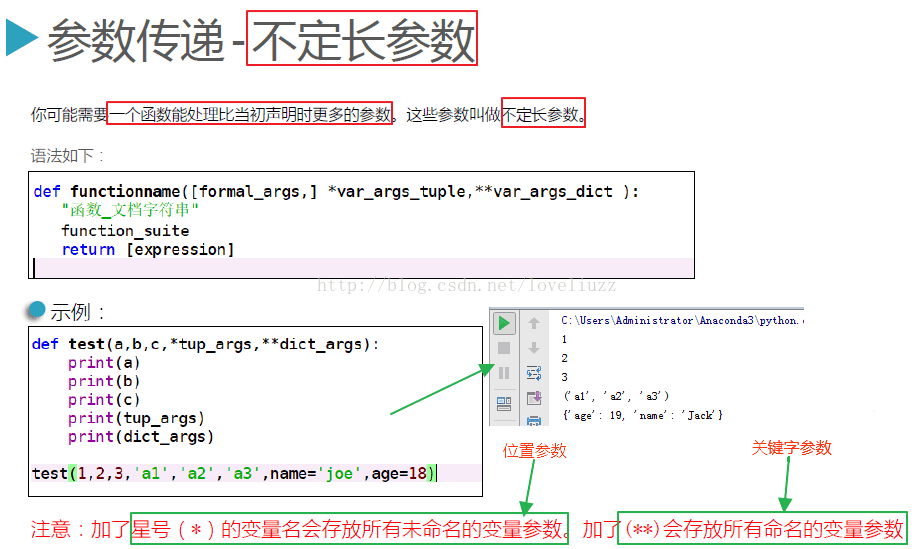
总结:
(1)定义时 *的作用 将位置实参装配成元组
定义时 **的作用 将关键字实参装配成字典
(2)调用时 *作用 将元组或列表打散成位置参数进行参数传递
调用时 **作用 将字典打散成关键字参数进行参数传递
#不定个数参数
def test2(x,y,z,*args):
print(x,y,z,args)
#定义时 *的作用 将位置实参装配成元组
test2(1,2,3,4,6,7,8,9)
def test3(x,y,z,**kwargs):
print(x,y,z,kwargs)
#定义时 **的作用 将关键字实参装配成字典
test3(1,2,3,a=6,b=19,c=8)
def ts(x,*args,**kwargs):
print(x,args,kwargs)
ts(1,2,3,a=6,b=19,c=8)
def test4(x,y,z):
print(x,y,z)
x = [1,2,3]
y = {"x":1,"y":"hello","z":"你好"}
test4(*x) #调用时 *作用 将元组或列表打散成位置参数进行参数传递
test4(**y) #调用时 **作用 将字典打散成关键字参数进行参数传递 运行结果:
1 2 3 (4, 6, 7, 8, 9)
1 2 3 {'b': 19, 'a': 6, 'c': 8}
1 (2, 3) {'b': 19, 'a': 6, 'c': 8}
1 2 3
1 hello 你好
4、函数的传值:基本类型传值调用、非基本类型参数传递调用(强引用与弱引用)
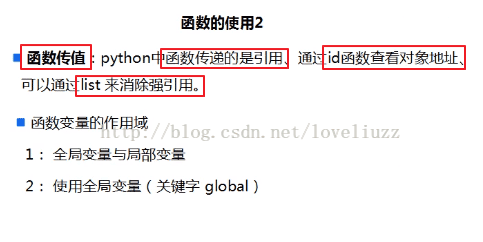
#!/usr/bin/env python # -*- coding:utf-8 -*- # Author:ZhengzhengLiu #基本类型传值调用 def test(x): print(x) test(10) #非基本类型参数传递调用 li = [1,2,3,4] print(id(li)) #打印传递前的地址 def test1(x): print(id(x)) x[0] = 2 #修改第一个参数为2 print(x) test1(li) #强引用(传址调用,列表里面的内容会进行修改) #test1(list(li)) #弱引用(用list可以消除强引用,不能修改列表里的元素) for i in li: print(i)
运行结果:(强引用传址调用)
10
17741864
17741864
[2, 2, 3, 4]
2
2
3
4
#!/usr/bin/env python # -*- coding:utf-8 -*- # Author:ZhengzhengLiu #基本类型传值调用 def test(x): print(x) test(10) #非基本类型参数传递调用 li = [1,2,3,4] print(id(li)) #打印传递前的地址 def test1(x): print(id(x)) x[0] = 2 #修改第一个参数为2 print(x) #test1(li) #强引用(传址调用,列表里面的内容会进行修改) test1(list(li)) #弱引用(用list可以消除强引用,传值调用,不能修改列表里的元素) for i in li: print(i)
运行结果:(弱引用,传值调用)
10
18501544
18613272
[2, 2, 3, 4]
1
2
3
4
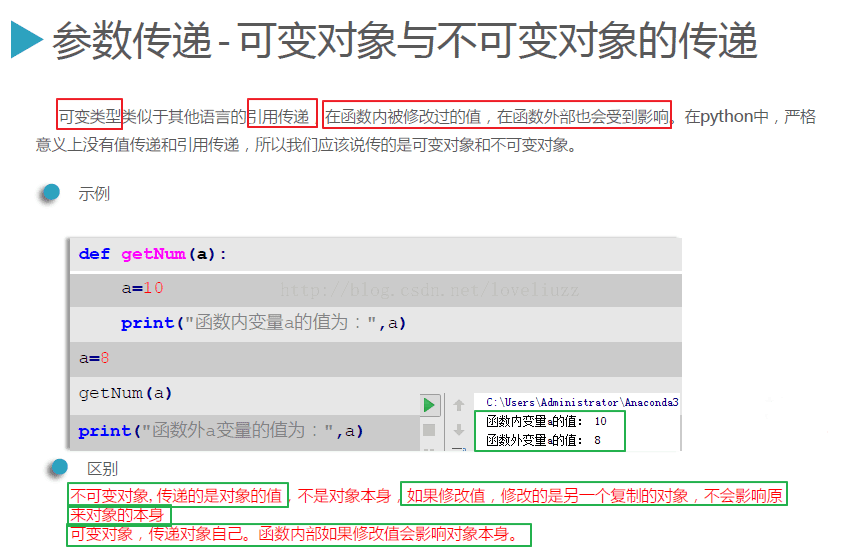
#不可变对象——传递对象的值,修改值修改的是另一个复制对象,不影响原来对象本身
def getNum(a):
a = 10
print("函数内变量a的值:",a)
a = 8
getNum(a)
print("函数外变量a的值:",a)
#可变对象——传递对象本身,函数内部修改值会影响对象本身
list01 = [0,1,2,3]
def getNum1(num):
num.append(4)
print(num)
print(id(num))
getNum1(list01)
print(list01)
print(id(list01))运行结果:
函数内变量a的值: 10
函数外变量a的值: 8
[0, 1, 2, 3, 4]
5908280
[0, 1, 2, 3, 4]
5908280
5、函数的返回值
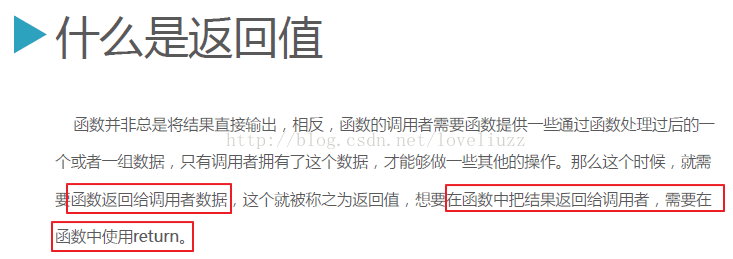
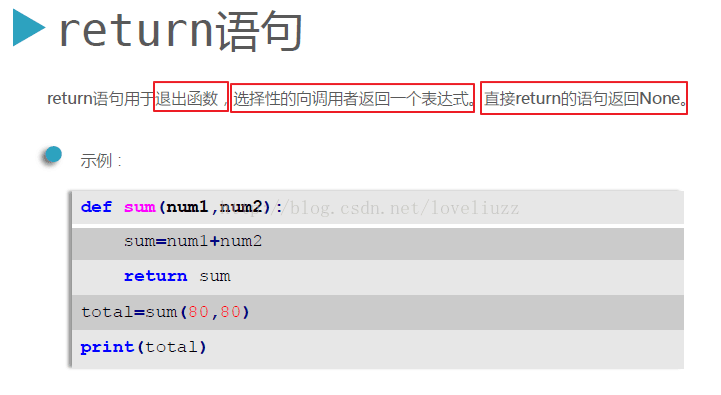
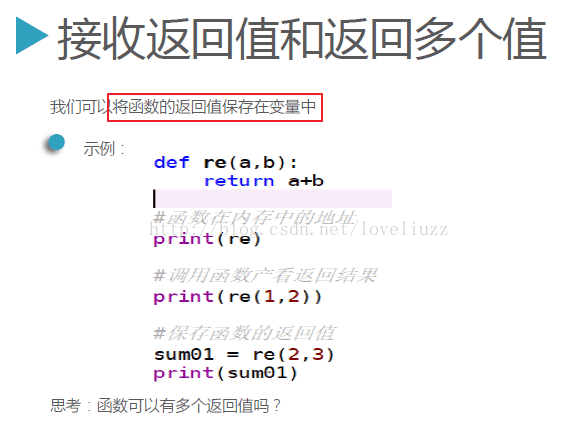
示例代码:
#多个返回值 def re(a,b): a *= 10 b *= 10 return a,b num = re(1,2) print(type(num)) #如果返回多个值,并且存在一个变量中,会以元组的形式保存 print(num) #分别获取多个返回值 re1,re2 = re(3,4) print(type(re1)) print(re1,re2)
运行结果:
<class 'tuple'>
(10, 20)
<class 'int'>
30 40
简单实例练习:
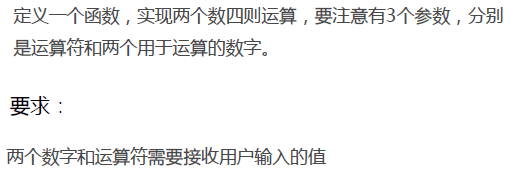
def operation(a,b,opt):
if opt == "+":
return a+b
elif opt == "-":
return a-b
elif opt =="*":
return a*b
elif opt =="/":
return a/b
else:
return "输入有误"
num1 = int(input("请输入第一个字符:"))
num2 = int(input("请输入第二个字符:"))
op = input("请输入运算符:")
result = operation(num1,num2,op)
print(result)运行结果:
请输入第一个字符:1
请输入第二个字符:2
请输入运算符:+
3
6、变量的作用域:全局变量与局部变量
在函数的内部,不能识别全局变量,想要在函数内部使用全局变量,需要关键字global,但不建议这样使用,使用global具有污染性。
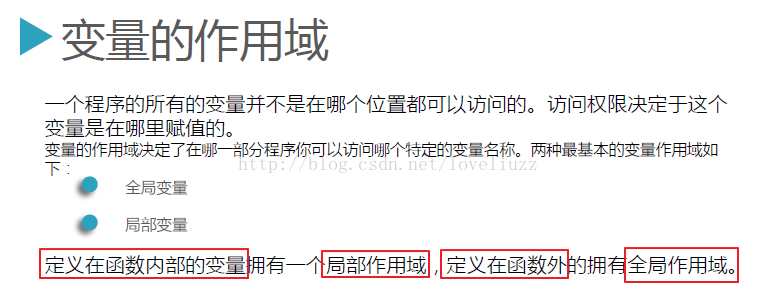
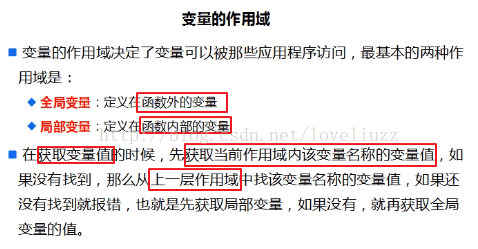
(1)局部变量
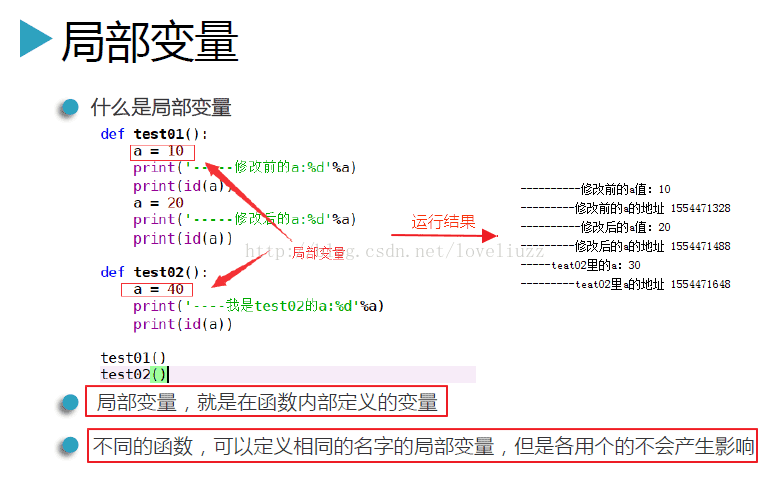
(2)全局变量
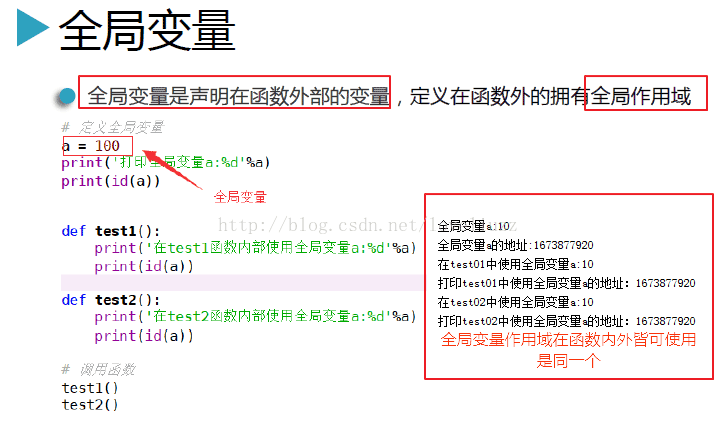
(3)当全局变量与局部变量同名时,优先使用局部变量
#全局变量与局部变量同名
a = 10 #全局变量
print("全局变量a:%d"%a)
def test01():
a = 20
print("test01中的a:%d"%a)
def test02():
print("test02中的a:%d"%a)
test01()
test02()运行结果:
全局变量a:10
test01中的a:20
test02中的a:10
(4)修改全局变量
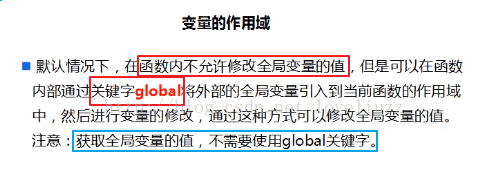
#!/usr/bin/env python # -*- coding:utf-8 -*- # Author:ZhengzhengLiu i = 20 def test(): #i += 10 #函数内部直接修改全局的值(错误) global i #函数内部修改全局的值用global关键字 i += 10 print(i) #获取全局变量的值 test()
运行结果:
30
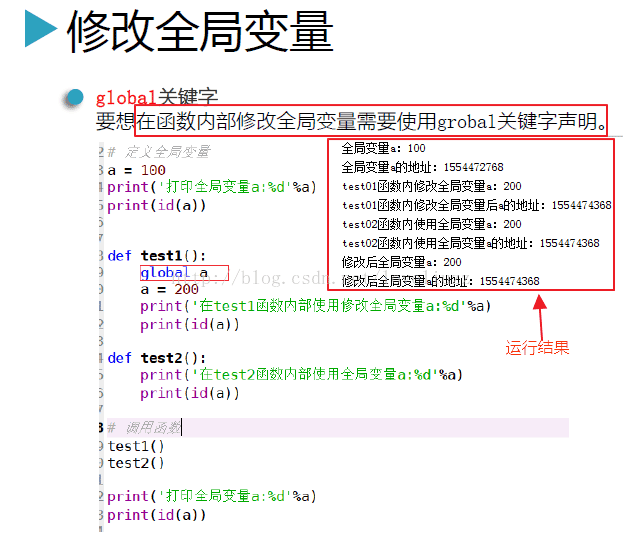
注:上边代码中,函数内修改不可变类型的全局变量,需要通过global关键字

总结:对不可变类型变量重新赋值,实际上是重新创建一个不可变类型对象,并将原来的变量指向新创建的对象。
如果没有其他变量引用原有对象的话(即:引用计数为0),原有对象就会被回收。
(5)可变类型的全局变量:函数内修改可变类型的全局变量,可以不使用global关键字

#函数内修改可变类型的全局变量——直接修改,无需使用global关键字
a = [100,200,300]
print("可变类型全局变量a:",a)
print("可变类型全局变量a的地址:%d" %id(a))
def test01():
a.append(400)
print("test01函数内修改可变类型全局变量a:",a)
print("test01函数内修改可变类型全局变量后a的地址:%d" %id(a))
def test02():
print("test02函数内使用可变类型全局变量a:",a)
print("test02函数内使用可变类型全局变量a的地址:%d" %id(a))
test01()
test02()运行结果:
可变类型全局变量a: [100, 200, 300]
可变类型全局变量a的地址:18241896
test01函数内修改可变类型全局变量a: [100, 200, 300, 400]
test01函数内修改可变类型全局变量后a的地址:18241896
test02函数内使用可变类型全局变量a: [100, 200, 300, 400]
test02函数内使用可变类型全局变量a的地址:18241896
7、匿名函数
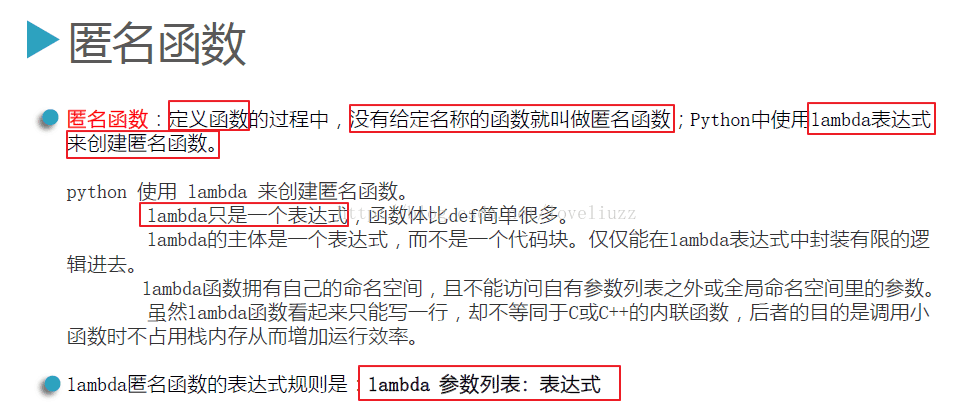
示例代码:
#匿名函数——lambda #语法:lambda arg1[,arg2...]:表达式 默认return num = lambda a,b:a+b print(num(1,2))
运行结果:
3
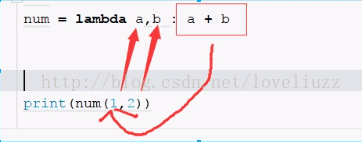
简单应用(一):
#四则运算——利用lambda表达式
def operation(a,b,opt):
re = opt(a,b)
return re
num1 = int(input("请输入第一个字符:"))
num2 = int(input("请输入第二个字符:"))
result = operation(num1,num2,lambda a,b:a+b)
print(result)运行结果:
请输入第一个字符:2
请输入第二个字符:3
5
简单应用(二):
#列表中的字典元素进行排序——lambda表达式
students = [
{"name":"Joe","age":"18"},
{"name":"Tom","age":"20"},
{"name":"Susan","age":"16"}
]
students.sort(key=lambda x:x["name"]) #对字典按照关键字name排序
print(students)运行结果:
[{'age': '18', 'name': 'Joe'}, {'age': '16', 'name': 'Susan'}, {'age': '20', 'name': 'Tom'}]
8、递归函数
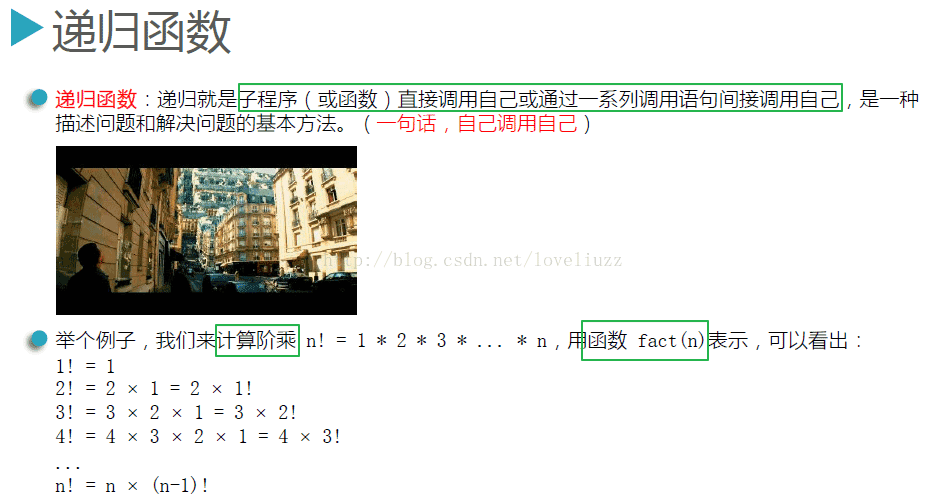
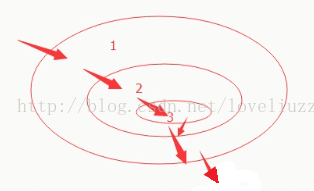
代码示例:
#函数的嵌套
def test1():
print("in test1...")
def test2():
test1()
print("in test2...")
def test3():
test2()
print("in test3...")
test3()运行结果:
in test1...
in test2...
in test3...
#递归函数
def func(n):
print("进入第%d层梦"%n)
if n ==3:
print("进入潜意识区")
else:
func(n+1)
print("从第%d层梦中醒来"%n)
func(1)运行结果:
进入第1层梦
进入第2层梦
进入第3层梦
进入潜意识区
从第3层梦中醒来
从第2层梦中醒来
从第1层梦中醒来
应用:求阶乘
#阶乘——利用while i = 1 num = 1 while i <= 4: num = num*i i+=1 print(num) #阶乘——利用递归 def func01(n): if n ==1: return 1 return n*func01(n-1) print(func01(4))
运行结果:
24
24
利用递归实现阶乘的原理过程:
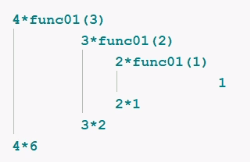
9、常用内置函数
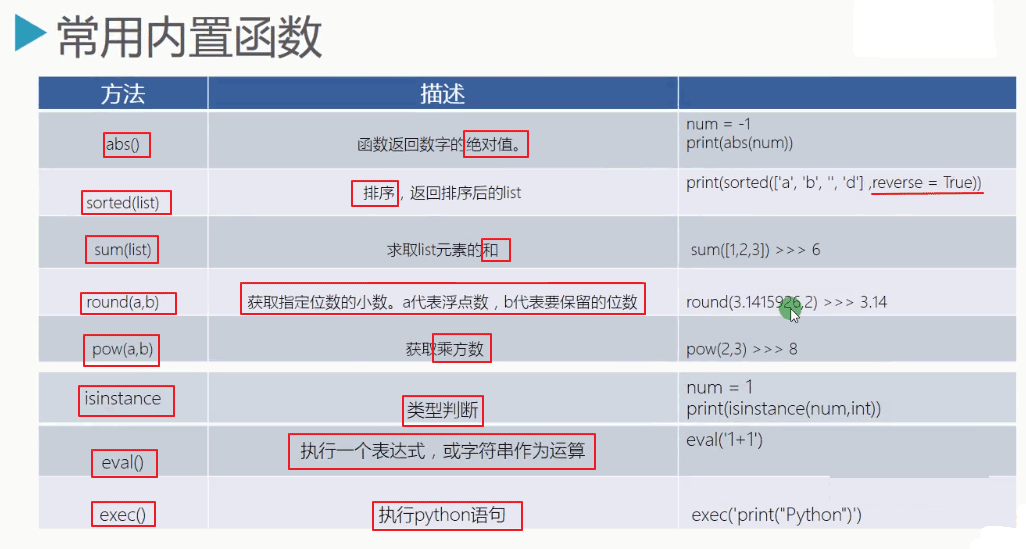
示例代码:
#abs()——绝对值函数
num = -1
print(abs(num))
#sorted()——排序函数
list01 = [1,4,2,7,9,3]
print(sorted(list01)) #由小到大排序
print(sorted(list01,reverse=True)) #由大到小排序
#sum()——求和
print(sum(list01))
#round()——四舍五入,获取指定位数的小数
print(round(3.1415926,2))
#pow()——乘方数(幂)
print(pow(2,3))
#isinstance——类型判断
num1 = 5
print(isinstance(num1,int))
#eval()——执行表达式或字符串作为运算
print(eval("1+3"))
#exec()——执行Python语句
exec('print("Hello")')运行结果:
1
[1, 2, 3, 4, 7, 9]
[9, 7, 4, 3, 2, 1]
26
3.14
8
True
4
Hello
10、高阶函数

示例代码:
#常用高阶函数 #map() num1 = map(lambda x:x*2,[1,2,3,4,5]) print(num1) for i in num1: #遍历map对象的内容 print(i,end=" ") print() #filter() num2 = filter(lambda x:x%2 == 1,[1,2,3,4,5,6,7,8,9,10]) print(num2) for j in num2: #遍历filter对象的内容 print(j,end=" ") print() #reduce() from functools import reduce print(reduce(lambda x,y:x+y,[1,2,3,4],10)) #10是起始值
运行结果:
<map object at 0x0059F730>
2 4 6 8 10
<filter object at 0x0059F890>
1 3 5 7 9
20

name = ["joe","jack","TOM","suSAN"]
age = [17,18,20,15]
sex = ["M","M","M","F"]
#案例一——格式化英文名。首字母大写,其他小写
names = map(lambda t:t[0:1].upper()+t[1:].lower(),name)
for stu_name in names:
print(stu_name,end=" ")
print()
#案例二——将三个序列结合到一起,形成一个集合
newStu = map(lambda n,a,s:(n,a,s),name,age,sex)
student = []
for tup in newStu:
student.append(tup)
print(student)
#案例三——过滤性别为男的用户
males = filter(lambda x:x[2] == "M",student)
man = []
for m in males:
man.append(m)
print(man)
#案例四——求性别为男的用户的平均年龄
from functools import reduce
man_count = len(man)
total_age = reduce(lambda x,y:x+y[1],man,0)
print("总年龄:",total_age)
print("平均年龄:%.2f" %(total_age/man_count))运行结果:
Joe Jack Tom Susan
[('joe', 17, 'M'), ('jack', 18, 'M'), ('TOM', 20, 'M'), ('suSAN', 15, 'F')]
[('joe', 17, 'M'), ('jack', 18, 'M'), ('TOM', 20, 'M')]
总年龄: 55
平均年龄:18.33
11、约瑟夫环
(1)一群人围在一起坐成环状(如:N)
(2)从某个编号开始报数(如:K)
(3)数到某数(如:M)的时候,此人出列,下一个人重新报数
(4)一直循环,直到所有人出列,约瑟夫环结束
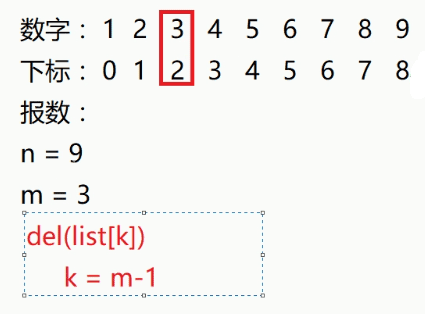
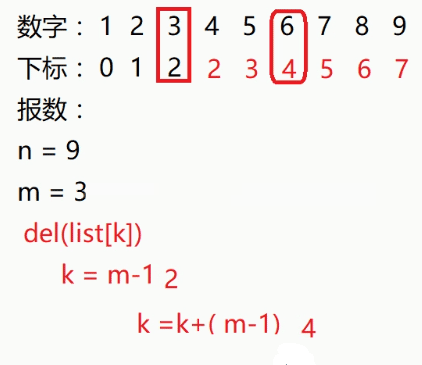
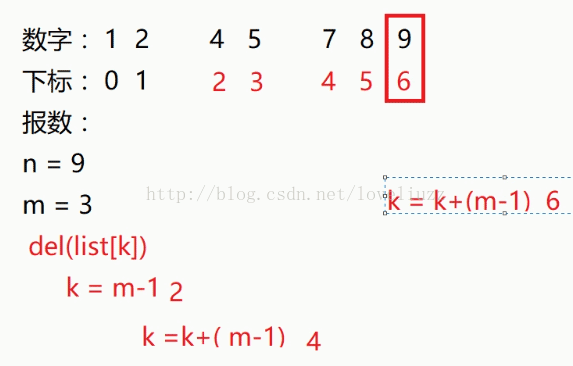
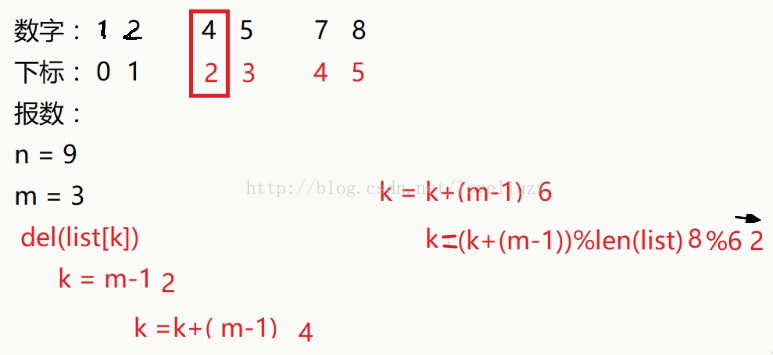
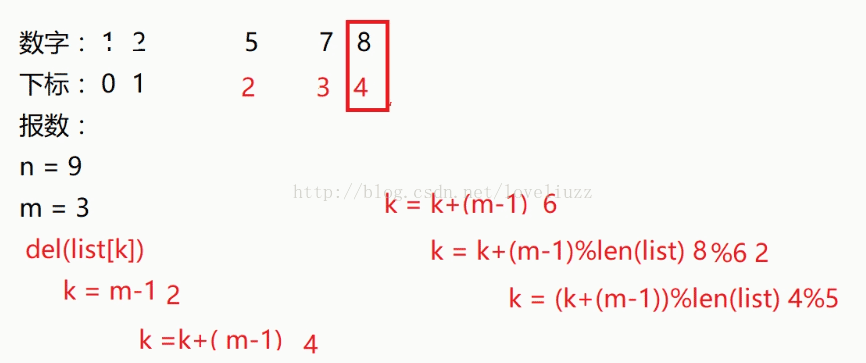
约瑟夫环实现代码:
#约瑟夫环问题
# n=9(总人数) m = 3(报数) k:索引
#k = (k+(m-1))%len(list)
def func(n,m):
#生成一个列表
people = list(range(1,n+1))
k = 0 #定义开始的索引
#开始循环报数
while len(people) > 2:
k = (k+(m-1))%len(people)
print("kill:",people[k])
del(people[k])
print(k)
return people
print(func(9,3))运行结果:
kill: 3
2
kill: 6
4
kill: 9
6
kill: 4
2
kill: 8
4
kill: 5
2
kill: 2
1
[1, 7]
12、函数重载
在Python中,没有函数重载,若非要使用函数重载,则后边的同名函数会覆盖掉前面的函数。
#函数重载 def test(x): print(x) def test(x,y): print(x+y) #test(1) #出错 test(1,2) #覆盖test(x)
运行结果:
3
13、函数的嵌套和闭包
(1)函数嵌套:在函数内部再定义新的函数
#!/usr/bin/env python
# -*- coding:utf-8 -*-
# Author:ZhengzhengLiu
#函数嵌套
def test():
def test1():
def test2():
print("hello")
return test2
return test1
res = test() #test函数返回值res是一个函数,等价于res ==> test1
re = res() #res() ==>test1() ,test1函数返回值re是一个函数,re==>test2
re() #re() ==> test2()运行结果:
hello
(2)闭包:内部函数可以取到外部函数的局部变量
#闭包:内部函数可以取到外部函数的局部变量 def test(x): def test1(y): def test2(z): print(x+y+z) return test2 return test1 res = test(10) re = res(20) re(30)
运行结果:
6
14、装饰器
(1)形象举例:照片与相框

照片:被装饰的对象,相框:装饰对象。
装饰作用:动态扩展装饰,即:不会改变被装饰的对象(照片)的内容,只是动态改变装饰的对象(相框)。
(2)装饰器修饰无参数的函数
#!/usr/bin/env python
# -*- coding:utf-8 -*-
# Author:ZhengzhengLiu
#装饰器——日志管理
def log(func): #log(func)==> func = delete(delete函数作为实参传入到func)
def warp():
print("logger strating...")
func() #运行delete
print("logger ending...")
return warp
@log #用log来装饰delete,等价于delete = log(delete) = warp
def delete():
print("deleting...")
delete() #执行warp运行结果:
logger strating...
deleting...
logger ending...
(3)装饰器修饰有参数和返回值的函数
#装饰器修饰有参数、有返回值的函数
def log(func): #log(func)==> func = delete(delete函数作为实参传入到func)
def warp(*args,**kwargs):
print("logger strating...")
res = func(*args,**kwargs) #运行delete
print(res)
print("logger ending...")
return warp
@log #用log来装饰delete,等价于delete = log(delete) = warp
def delete(name,age):
print("deleting...")
print(name,age)
return "delete success"
delete("liu",20) #执行warp运行结果:
logger strating...
deleting...
liu 20
delete success
logger ending...
(4)装饰器自身带有参数
#装饰器带有参数
def log(i):
def warp1(func):
def warp2(*args,**kwargs):
print("logger strating...")
if i>0:
print("logging success...")
func(*args, **kwargs)
else:
print("logging failed...")
print("logger ending...")
return warp2
return warp1
@log(1)
def delete():
print("deleting...")
delete()运行结果:
logger strating...
logging success...
deleting...
logger ending...
#装饰器带有参数
def log(i):
def warp1(func):
def warp2(*args,**kwargs):
print("logger strating...")
if i>0:
print("logging success...")
func(*args, **kwargs)
else:
print("logging failed...")
print("logger ending...")
return warp2
return warp1
@log(-1)
def delete():
print("deleting...")
delete()
#logger strating...
logging failed...
logger ending...15、迭代器
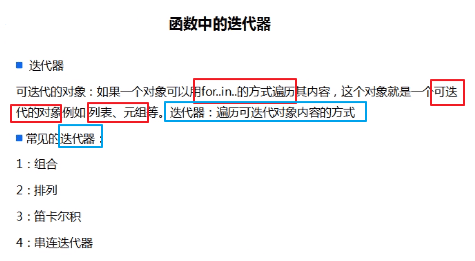
#!/usr/bin/env python # -*- coding:utf-8 -*- # Author:ZhengzhengLiu #迭代器——笛卡尔积 import itertools x = range(1,6) coml = itertools.combinations(x,3) #排列 coml2 = itertools.permutations(x,4) #组合 y = ["a","b","c"] coml3 = itertools.product(x,y) #笛卡尔积 coml4 = itertools.chain(coml,coml2,coml3) for h in coml4: print(h)
运行结果:
(1, 2, 3)
(1, 2, 4)
(1, 3, 4)
(2, 3, 4)
(1, 2, 3, 4)
(1, 2, 4, 3)
(1, 3, 2, 4)
(1, 3, 4, 2)
(1, 4, 2, 3)
(1, 4, 3, 2)
(2, 1, 3, 4)
(2, 1, 4, 3)
(2, 3, 1, 4)
(2, 3, 4, 1)
(2, 4, 1, 3)
(2, 4, 3, 1)
(3, 1, 2, 4)
(3, 1, 4, 2)
(3, 2, 1, 4)
(3, 2, 4, 1)
(3, 4, 1, 2)
(3, 4, 2, 1)
(4, 1, 2, 3)
(4, 1, 3, 2)
(4, 2, 1, 3)
(4, 2, 3, 1)
(4, 3, 1, 2)
(4, 3, 2, 1)
(1, 'a')
(1, 'b')
(1, 'c')
(2, 'a')
(2, 'b')
(2, 'c')
(3, 'a')
(3, 'b')
(3, 'c')
(4, 'a')
(4, 'b')
(4, 'c')
以上是“Python3.5基础之函数定义的示例分析”这篇文章的所有内容,感谢各位的阅读!相信大家都有了一定的了解,希望分享的内容对大家有所帮助,如果还想学习更多知识,欢迎关注亿速云行业资讯频道!
免责声明:本站发布的内容(图片、视频和文字)以原创、转载和分享为主,文章观点不代表本网站立场,如果涉及侵权请联系站长邮箱:is@yisu.com进行举报,并提供相关证据,一经查实,将立刻删除涉嫌侵权内容。